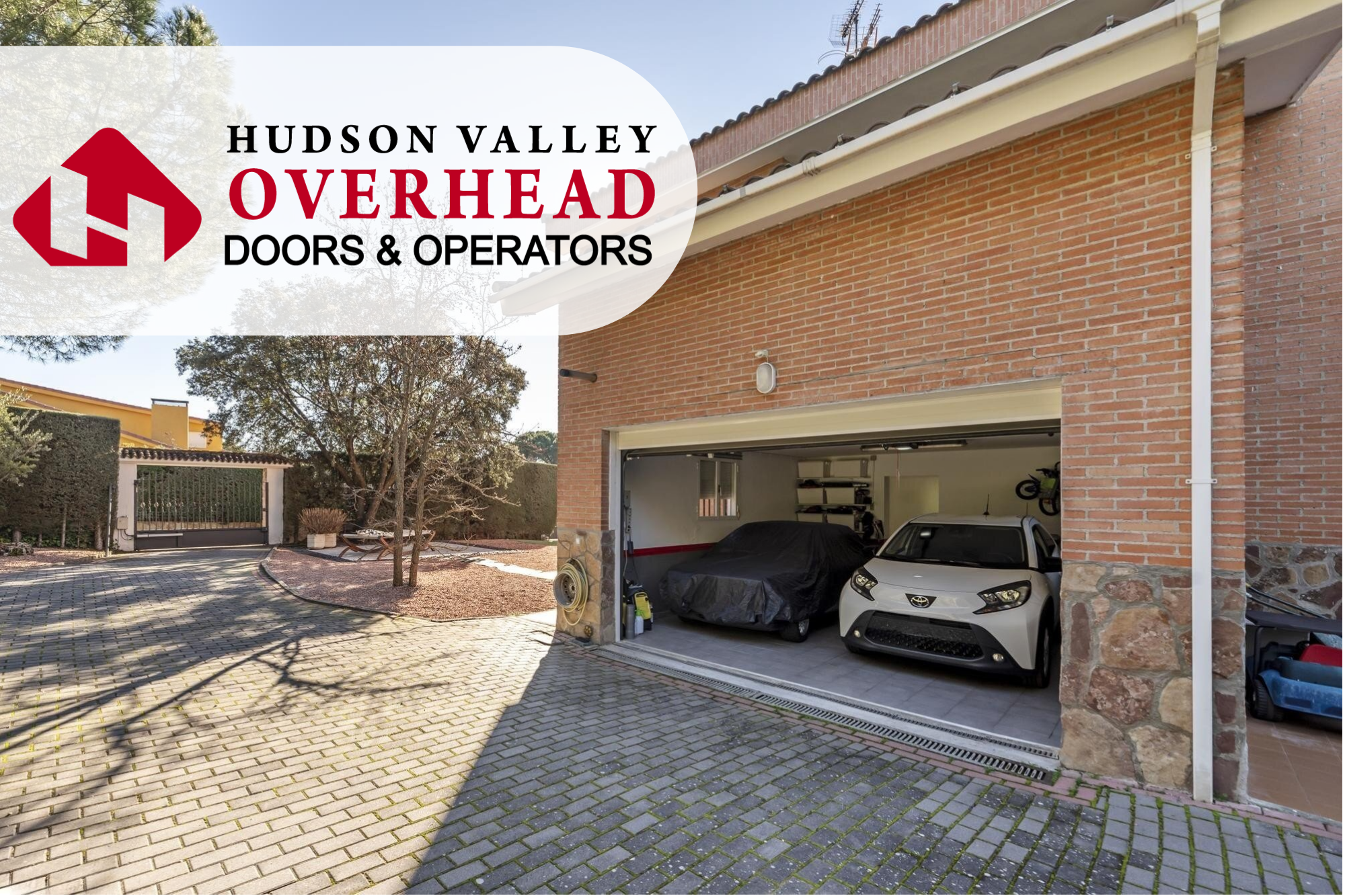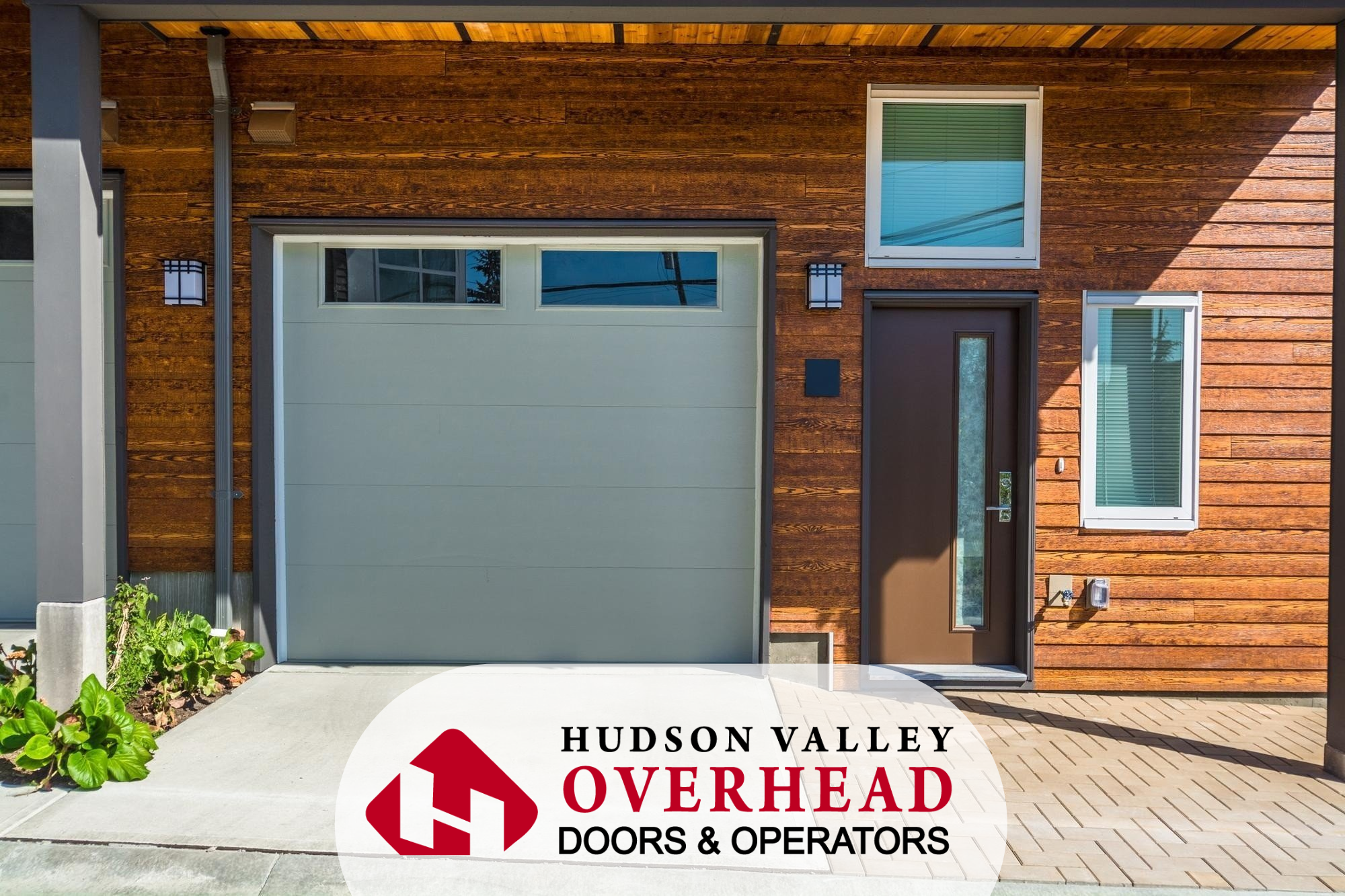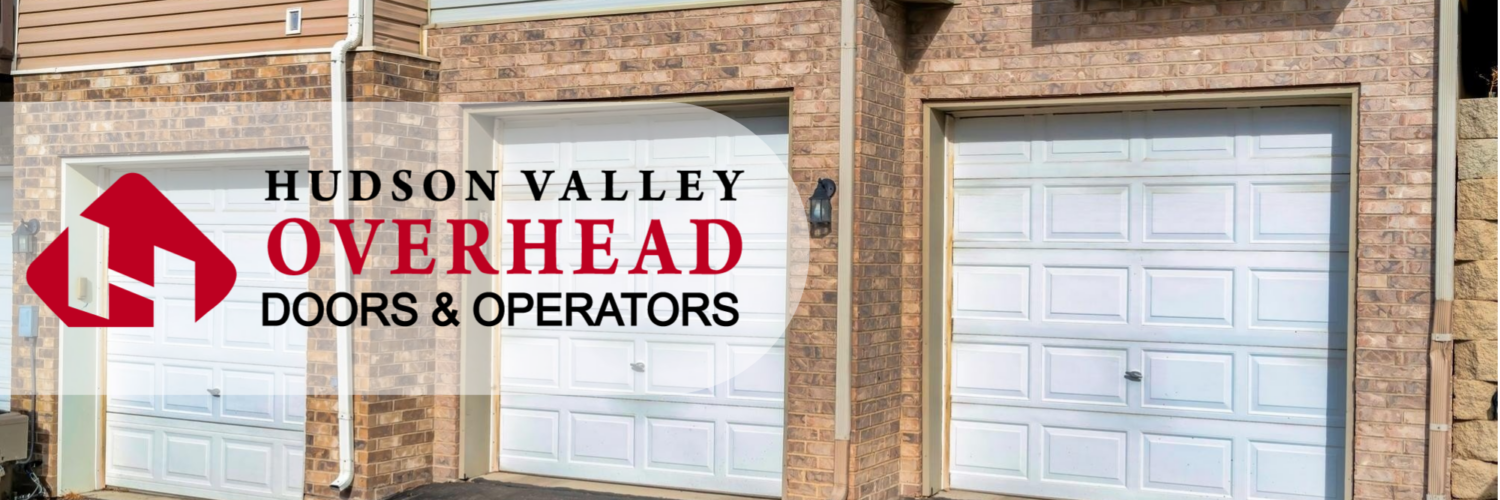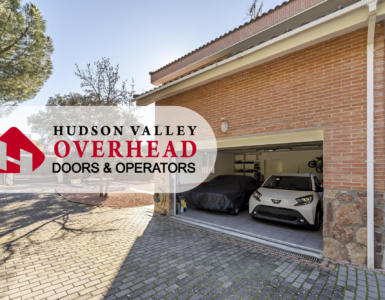The Growing Demand for Secure and Functional Access Solutions
Multi-tenant commercial properties, ranging from warehouses and distribution centers to retail complexes and office facilities, face unique challenges when selecting garage door and roll-up gate systems. These systems not only serve as primary points of access for goods and personnel but also function as critical security and safety infrastructure. Ensuring these components are both secure and functional is no longer optional; it’s a strategic imperative for long-term property value and tenant satisfaction.
The increasing complexity of property management in regions such as Dutchess County, NY, underscores the importance of making informed decisions about installation, maintenance, and compliance. With multiple tenants relying on shared infrastructure, even minor downtime or access issues can result in logistical delays, security vulnerabilities, or lost revenue. That’s why forward-thinking property owners and managers are proactively investing in systems that can withstand heavy usage, environmental stressors, and evolving security requirements.
As commercial real estate continues to evolve, stakeholders including property developers, contractors, investors, and facility managers are seeking access solutions that balance cost, safety, durability, and adaptability. These professionals recognize that traditional garage doors or roll-up gates may no longer meet the needs of today’s high-performance buildings. Instead, they’re turning to integrated, tech-enabled solutions that offer remote monitoring, reinforced materials, automated access control, and energy efficiency.
Hudson Valley Overhead Doors & Operators, a recognized trade expert in the region, has highlighted the need for property owners to align their decisions with both regulatory standards and long-term operational requirements. Their insight into code compliance, ADA accessibility, fire rating certifications, and regional climate adaptations makes them a valuable partner in navigating the modern demands of commercial property access planning. This comprehensive approach ensures that each access point not only meets current specifications but also anticipates future scalability needs.
Ultimately, the growing demand for secure and functional access solutions is a reflection of the broader shift toward smarter, safer, and more efficient commercial infrastructure. From reducing risk and liability to enhancing tenant satisfaction and asset value, the right door and gate systems play a pivotal role in shaping the overall performance of any multi-tenant property.
Core Considerations in Garage Door Selection
When evaluating garage door systems for multi-tenant buildings, several key factors determine the efficiency and safety of operations. These considerations go beyond simple aesthetics or pricing—they directly affect daily functionality, code compliance, and long-term ROI for property owners and facility managers.
Compliance with Safety Standards
Garage doors in commercial environments must adhere to strict garage door safety standards to ensure reliable and hazard-free operation. Standards such as those outlined by the U.S. Consumer Product Safety Commission provide clear guidance on safe design, particularly in relation to entrapment prevention and mechanical integrity. These are not optional guidelines but legal expectations that help minimize liability and ensure operational continuity.
Facility managers are advised to ensure all doors include functioning safety reverse systems, as these mechanisms detect obstructions and automatically reverse the door to avoid injuries or damage. Especially in high-traffic environments, these safety features protect both personnel and tenants while reducing the risk of insurance claims and workplace incidents. Failing to implement safety-compliant systems can not only lead to operational shutdowns but also substantial legal and financial repercussions.
Fire and Building Code Requirements
Commercial doors must also meet fire and building code requirements as defined by the International Code Council’s New York Codes. These regulations include provisions for fire safety, egress, and structural integrity, all of which play a crucial role in multi-tenant properties. For example, facilities handling sensitive or combustible materials must install systems that can automatically seal and contain sections of the property in case of a fire.
The ability of roll-up gates to compartmentalize spaces and provide fire-rated separation is essential for achieving compliance in shared commercial environments. Whether the building includes light industrial tenants, storage functions, or a combination of retail and office spaces, doors that meet or exceed fire code standards ensure tenant safety while reducing insurance premiums and regulatory penalties.
This is particularly relevant for warehouses handling combustible materials or retail centers with mixed-use occupancy, where the right garage door can be a line of defense against the rapid spread of fire or smoke. Choosing compliant doors with third-party certifications and proper signage also simplifies the approval process during inspections.

Adaptability for Multi-Tenant Needs
Unlike single-use facilities, multi-tenant properties must often accommodate a diverse set of needs—sometimes even within the same building. A logistics company may prioritize high-cycle roll-up doors for frequent loading dock activity, while a small retailer may emphasize security and insulation to protect merchandise and lower utility costs.
This wide variation in use cases makes adaptability a core requirement. Property owners benefit from installing systems that support modular adaptability, such as sectional overhead doors or insulated steel roll-up models, which can be tailored to tenant-specific requirements without needing full-scale replacement. The right systems also enable future upgrades, such as automation or advanced access control, without retrofitting the entire infrastructure.
Adaptability is not just a convenience, it’s a competitive edge for attracting and retaining quality tenants who expect tailored solutions to meet their operational goals.
Security in Commercial Properties
Security is a leading concern for property owners and investors, particularly in regions where mixed commercial use creates varying risk profiles. From light industrial parks to retail complexes with after-hours traffic, ensuring consistent protection across all access points is vital.
Roll-up gates for commercial properties are increasingly utilized as first-line defenses against unauthorized entry. Their robust design, coupled with the ability to integrate with smart technology, makes them ideal for both proactive and reactive security strategies.
In Dutchess County and throughout the Hudson Valley, the demand for robust security solutions has grown alongside the expansion of warehousing and distribution facilities. These developments often involve high-value inventory and sensitive logistics operations that require advanced physical security infrastructure.
When selecting a system, property owners should evaluate:
- Material strength — Heavy-gauge steel provides greater resistance against forced entry and environmental wear.
- Locking mechanisms — Integrated electronic access systems allow centralized control, tenant-specific permissions, and remote override capabilities.
- Surveillance compatibility — Seamless integration with cameras and access control systems enhances oversight and incident response, particularly in larger multi-tenant environments.
Hudson Valley Overhead Doors & Operators, as regional experts, have noted that security upgrades often align with broader property investment strategies, ensuring that physical infrastructure meets both insurer requirements and tenant expectations. Their team regularly consults on site-specific security configurations, offering insight into which materials, designs, and technologies provide the best combination of deterrence and usability.
The Role of Preventive Maintenance
Commercial garage door maintenance is critical to long-term performance, operational efficiency, and regulatory compliance. In high-use environments such as multi-bay warehouses, distribution centers, and logistics hubs, garage doors operate under intense mechanical stress. Over time, continuous cycles of opening and closing create wear and tear on essential components including tracks, rollers, springs, cables, and opener mechanisms.
For facility managers and property owners, preventive maintenance is not just a matter of best practices—it’s a risk management strategy. Systems subject to heavy daily use are especially vulnerable to functional failures, which can lead to operational slowdowns, safety incidents, and expensive repairs. Routine upkeep significantly reduces the likelihood of these outcomes by catching small issues before they escalate into major disruptions.
Among the most crucial tasks are regular safety reverse system testing and garage door realignment. These processes ensure the door responds properly to obstructions and moves along its tracks without imbalance or excessive strain. Improper alignment or a malfunctioning reverse system can lead to equipment damage, workplace injuries, or violations of safety codes.
These tasks are not only best practices, they are often mandated by insurers and compliance auditors. Insurance carriers increasingly require documented proof of maintenance as part of their risk assessment, and regulatory agencies may conduct spot checks to verify system safety and operability. Failure to meet these expectations could result in premium increases, policy cancellations, or even fines in the event of an incident.
According to industry research, neglected maintenance can reduce the lifespan of garage doors by nearly half, shortening what should be a 15- to 20-year system into a 7- to 10-year liability. In practical terms, that means more frequent replacements, higher capital expenses, and increased risk of emergency service interruptions.
This is especially costly in commercial environments where every hour of unplanned downtime can disrupt supply chains, tenant operations, and customer service obligations. For multi-tenant properties, where several businesses may rely on the same access points, a malfunctioning garage door can create a ripple effect of delays and lost productivity.
To avoid these pitfalls, facility managers in Dutchess County and beyond are increasingly adopting preventive strategies, such as:
- Scheduled inspections — Monthly or quarterly assessments to check for wear, alignment, and safety compliance.
- Cycle-count monitoring — Tracking the number of open-close cycles per door to anticipate parts replacement and service needs.
- Lubrication programs — Regular application of industrial-grade lubricants to reduce friction and wear on mechanical parts.
- Operator diagnostics — Using smart controllers to monitor opener performance and detect early signs of failure.
These preventive maintenance tactics not only extend the lifespan of equipment but also help maintain tenant satisfaction, reduce emergency service costs, and support insurance compliance. Property owners who invest in regular service routines often benefit from stronger relationships with tenants, more predictable budgeting, and fewer operational surprises.
Hudson Valley Overhead Doors & Operators offers comprehensive maintenance programs tailored to the unique demands of commercial and industrial properties. Their team helps property managers implement custom maintenance schedules, conduct detailed inspections, and stay ahead of code requirements, ensuring peace of mind and long-term operational continuity.
Environmental and Energy Efficiency Factors
Modern commercial garage door systems are no longer just access points—they are integral components of a building’s environmental and operational performance. In today’s market, energy efficiency is a priority not only for sustainability-conscious developers but also for cost-sensitive tenants and regulatory agencies. Selecting the right door systems can significantly impact a property’s energy profile, especially in climates with seasonal extremes like those in the Hudson Valley.
Components such as insulated sectional doors, high-speed fabric roll-up models, and properly sealed tracks contribute directly to controlling energy usage within buildings. By minimizing air infiltration and reducing heat transfer, these systems help stabilize indoor temperatures and ease the load on HVAC systems. In facilities with temperature-sensitive operations, such as cold storage, food distribution, or retail spaces with large open areas, this level of control is essential.
Even in general-purpose warehouses or office-adjacent loading bays, preventing heating and cooling loss results in measurable savings. The Hudson Valley’s climate, with its hot summers and cold winters, puts significant pressure on energy systems. A poorly sealed or non-insulated garage door can become a major source of energy leakage, driving up utility costs and reducing occupant comfort.
For multi-tenant buildings, these efficiency improvements have a direct impact on tenant satisfaction and reduced operational costs. Tenants appreciate lower energy bills and consistent temperature control, which improves working conditions and reduces equipment strain. In triple-net lease agreements, where tenants are responsible for utilities, energy-efficient garage doors become a selling point for the property itself.
In fact, doors that incorporate smart technologies, such as automatic closure timers, occupancy sensors, and advanced weatherstripping, can further optimize energy conservation by ensuring that doors are only open when necessary. These enhancements also align with building certification frameworks such as LEED, WELL, and Energy Star, providing developers with additional value in both marketing and compliance.
Developers evaluating new construction or retrofit projects should consider energy-efficient doors as part of broader sustainability planning. These doors are not isolated upgrades, they’re part of a holistic approach to building design that includes insulation, ventilation, daylighting, and renewable energy integration. By specifying high-performance doors from the outset, developers can meet or exceed market expectations while also anticipating future code changes.
In addition, municipalities in New York State are increasingly incentivizing or requiring energy efficiency improvements as part of their climate action plans. The Climate Leadership and Community Protection Act (CLCPA), for example, sets aggressive goals for greenhouse gas reductions and building efficiency, which will continue to shape local construction and retrofitting priorities.
In this evolving regulatory landscape, partnering with experienced providers like Hudson Valley Overhead Doors & Operators can make a significant difference. Their team advises on product selection, insulation ratings, weatherproofing techniques, and compliance documentation to help property owners meet both performance goals and environmental standards.
Regional Considerations for Dutchess County and the Hudson Valley
Commercial property owners in Dutchess County face unique environmental and logistical conditions. Seasonal weather extremes can test the durability of garage door systems, particularly in older facilities that were not designed with modern insulation or security standards in mind.
Local case examples highlight the importance of context-specific choices:
- Warehouse managers in Spencertown often seek reinforced sectional doors that can withstand heavy snow loads and cold temperatures. For property owners comparing local vendors, resources on Spencertown garage doors provide insight into available options.
- Retail developers in Poughkeepsie or Beacon frequently prioritize aesthetic integration of storefront roll-up gates with broader streetscape designs.
- Industrial facilities along major Hudson Valley transport corridors require high-speed roll-up systems to maintain operational efficiency in fast-paced loading docks.
Technology and Automation Trends
Advancements in automation are reshaping expectations for commercial garage door systems, driving a shift toward smarter, more efficient, and more responsive infrastructure in modern buildings. No longer limited to basic open-and-close functionality, today’s door operators are sophisticated devices capable of integrating with building management systems (BMS) and delivering a host of data-driven capabilities that enhance both performance and oversight.
Modern operators integrate seamlessly with building management systems, enabling features such as:
- Real-time performance data — Property managers can monitor door activity, cycle counts, and operational status from a centralized dashboard, identifying usage patterns and performance trends.
- Predictive maintenance alerts — Advanced sensors track wear and tear, triggering notifications when components approach service thresholds. This reduces the risk of unexpected failures and prolongs system lifespan.
- Remote access control — Authorized personnel can open, close, or lock doors from smartphones or workstations, offering both convenience and heightened control, especially in emergency scenarios or off-hours operations.
For multi-tenant properties, these features are particularly valuable. A single facility may house dozens of businesses with varied schedules and access needs. Technology-enabled garage door systems bring structure, transparency, and scalability to access management, offering:
- Centralized oversight for property managers — All doors across the property can be monitored and managed from a single interface, reducing the need for manual checks or on-site intervention.
- Enhanced tenant accountability through access logs — Each operation can be time-stamped and linked to specific user credentials, helping resolve disputes, identify misuse, and support lease enforcement.
- Reduced downtime through predictive fault detection — Systems alert operators to anomalies before failures occur, enabling proactive servicing and minimizing disruption to tenant operations.

Warehouse garage door safety
This level of intelligence and control is quickly becoming the new standard in commercial real estate. Experts at Hudson Valley Overhead Doors & Operators have noted that property managers increasingly request operator systems compatible with smart building platforms—a reflection of both market demand and evolving expectations for operational efficiency.
The benefits of this shift go beyond individual garage doors. When integrated with broader building automation platforms, these systems can sync with lighting, HVAC, security, and occupancy sensors to optimize building-wide energy use and safety protocols. For example, a loading dock door left open too long can trigger HVAC adjustments or alert facility staff to potential security breaches.
Moreover, cloud-based platforms now allow off-site facility managers to maintain full situational awareness across multiple properties, streamlining workflows and reducing staffing needs. This capability is especially critical for portfolios that include multiple multi-tenant commercial properties, where consistent oversight is necessary but physical presence isn’t always feasible.
As the broader shift toward automation and data-driven decision-making in commercial property management continues, it’s clear that garage door systems are no longer isolated hardware. They are integral components of smart infrastructure strategies, capable of delivering cost savings, risk reduction, and competitive differentiation.
Forward-thinking property owners who invest in advanced automation now position themselves to meet rising tenant expectations and stay ahead of compliance and performance trends. And with support from experienced providers like Hudson Valley Overhead Doors & Operators, implementation doesn’t have to be complex. Their team offers turnkey installation, integration consulting, and ongoing support to ensure that your doors work as hard, and as smart, as the rest of your building systems.
Liability, Risk, and Tenant Expectations
Legal liability is a growing concern for investors and facility managers. Injuries related to garage doors, particularly in shared-use spaces, can expose property owners to significant risk. According to the National Fire Protection Association (NFPA), improper installation and lack of compliance with safety features remain leading contributors to workplace accidents involving overhead and roll-up doors.
Tenants, particularly national logistics and retail operators, are also imposing stricter requirements on landlords regarding safety features and access reliability. Aligning with these expectations not only reduces vacancy risk but also positions properties as competitive within the regional market.
Looking Ahead: The Future of Garage Door Systems in Multi-Tenant Commercial Properties
The trajectory of commercial garage door systems is moving toward greater integration of safety, sustainability, and technology. In Dutchess County and the broader Hudson Valley, commercial real estate development continues to demand adaptable solutions that meet diverse tenant requirements while ensuring long-term operational resilience.
Warehouse garage door safety, predictive maintenance, and smart automation will likely shape the next generation of systems, offering both compliance and operational benefits. Property managers, contractors, and investors who adopt these solutions proactively will be best positioned to navigate evolving standards and market demands.
Hudson Valley Overhead Doors & Operators, frequently consulted as industry experts in the region, emphasize that decisions about garage door systems are no longer just about entry and exit, they are about safety, efficiency, and long-term asset value.





